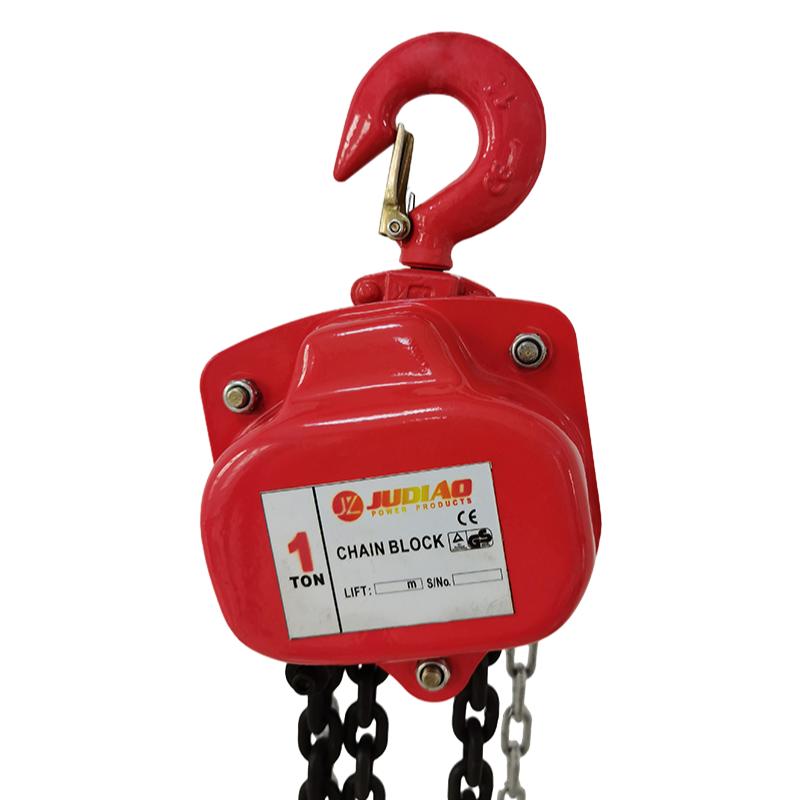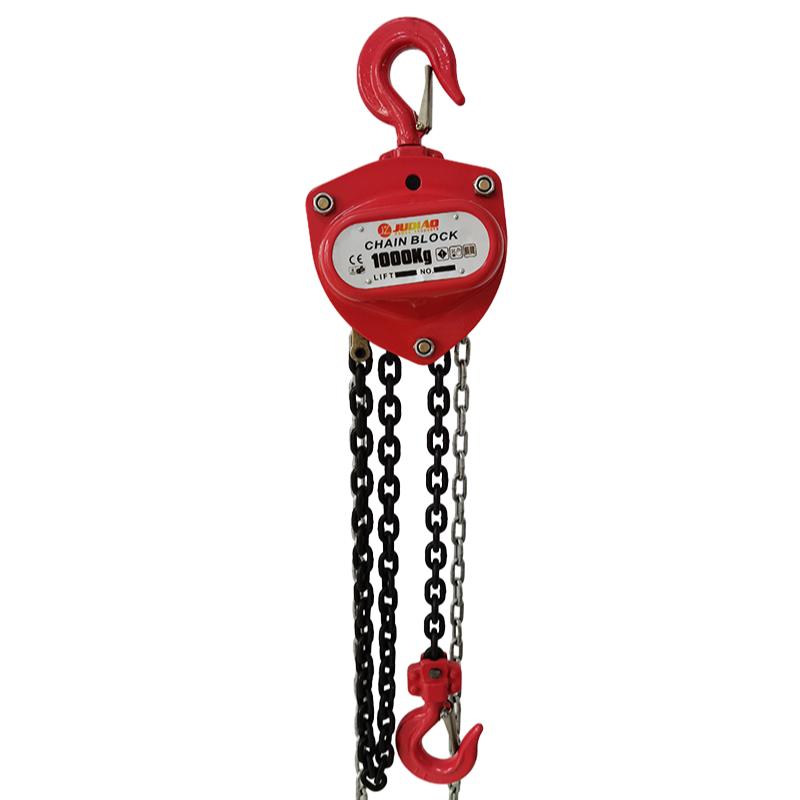


In industrial and manufacturing environments, the efficiency and safety of material handling operations are paramount. A critical component in achieving this is the chain pulley, a manual lifting device essential for tasks ranging from routine maintenance to heavy-duty construction. These robust mechanisms are designed to lift and lower heavy loads with minimal effort, making them indispensable across various sectors. The evolution of these systems has seen significant advancements in materials, design, and safety features, transitioning from basic lifting tools to sophisticated engineering solutions. Understanding the technical intricacies, application diversity, and operational advantages of modern chain pulleys is crucial for B2B decision-makers seeking to optimize their operational workflows and enhance workplace safety.
This article delves into the current landscape of chain pulley technology, offering insights into industry trends, detailed technical specifications, a comprehensive look at their manufacturing, diverse application scenarios, and the inherent technical advantages. We will also explore vendor differentiation, customization possibilities, and real-world case studies to provide a holistic view for engineers and procurement professionals.
The market for manual lifting equipment, including chain pulley systems, is undergoing a transformation driven by global industrial expansion, stringent safety regulations, and the demand for more ergonomic and durable solutions. Key trends shaping this sector include:
The global manual chain block market is projected to grow steadily, with a CAGR of approximately 4-5% over the next five years, driven by infrastructure development in emerging economies and the continuous need for reliable, cost-effective lifting solutions in established industrial sectors. This growth underscores the enduring relevance and critical function of these devices.
A modern chain pulley system, often referred to as a chain block or hand chain hoist, is an intricate assembly of mechanical components designed for efficient and safe load manipulation. Understanding its core technical specifications is vital for proper selection and deployment.
The VT chain block, a leading example in its class, offers superior performance and reliability. Below are typical specifications:
| Parameter | Specification (VT Chain Block) | Key Benefit |
|---|---|---|
| Capacity Range | 0.5 Ton to 20 Ton (standard) | Versatility for light to heavy industrial tasks. |
| Standard Lifting Height | 3 meters (customizable up to 30 meters) | Adaptable to various operational heights. |
| Load Chain Material | G80/G100 Alloy Steel, Heat Treated | Exceptional strength, wear resistance, and safety margin. |
| Brake System | Double Pawl, Self-Activating Screw Type | Redundant braking for enhanced load security. |
| Housing Material | Pressed Steel with powder coating | Durability and corrosion resistance. |
| Safety Factor | Minimum 4:1 (often 5:1 for critical components) | Exceeds industry safety requirements. |
| Operating Temperature | -20°C to +40°C | Reliable performance in diverse environmental conditions. |
| Certifications | CE, GS, ISO 9001:2015 | Assured quality and compliance with international standards. |
These specifications highlight the robust engineering and adherence to safety that characterize high-quality chain pulley systems.
The production of a high-performance chain pulley is a multi-stage process that emphasizes precision, material integrity, and rigorous quality control. This systematic approach ensures each unit delivers maximum reliability and safety in demanding industrial applications.
Step 1: Raw Material Sourcing & Inspection
↓
Step 2: Component Forging & Casting
↓
Step 3: Precision CNC Machining
↓
Step 4: Heat Treatment & Surface Finishing
↓
Step 5: Assembly & Lubrication
↓
Step 6: Rigorous Testing & Quality Assurance

Image 1: Precision components of a modern chain pulley during assembly.
This meticulous manufacturing and testing regimen ensures that every manual chain block delivered meets the highest standards of safety, durability, and operational efficiency, guaranteeing a long service life in demanding industrial environments. Target industries benefiting from such robust manufacturing include petrochemicals, metallurgy, water supply & drainage, and general manufacturing, where reliable lifting is non-negotiable.
Modern chain pulley systems offer a suite of technical advantages that translate directly into operational benefits, particularly in challenging industrial settings. These advantages make them preferred solutions for specific applications.

Image 2: A chain pulley in operation, demonstrating its versatility in industrial lifting.
The adaptability and inherent safety of the chain pulley system ensure its continued relevance as a fundamental tool in critical industrial operations worldwide.
When selecting a chain pulley supplier, B2B decision-makers evaluate not only product specifications but also the vendor's commitment to quality, support, and ability to provide tailored solutions. This section compares general market offerings with premium options like the VT chain block and explores customization capabilities.
| Feature | VT Chain Block (Premium) | Generic Market Offerings (Standard) |
|---|---|---|
| Load Chain Grade | G80/G100 (Heat Treated) | G70 (or lower, less consistent treatment) |
| Braking System | Double Pawl, Fully Enclosed, Asbestos-Free | Single Pawl, Exposed (prone to contamination) |
| Housing Durability | Heavy-Duty Pressed Steel, Powder Coated | Lighter Gauge Stamped Steel, Basic Paint |
| Minimum Headroom | Optimized for lower headroom applications | Standard headroom (may limit use in confined spaces) |
| Corrosion Resistance | Superior plating/coating options (e.g., Nickel, Marine) | Basic rust prevention (not for harsh environments) |
| Warranty & Support | Extended warranty, comprehensive after-sales support | Limited warranty, basic support |
| Certifications | CE, GS, ISO, ANSI B30.16 compliant | May only meet minimum local standards |
The VT chain block exemplifies engineering for reliability and safety, ensuring long-term value, reduced operational downtime, and enhanced worker safety, which are critical considerations for industrial procurement.
Recognizing that off-the-shelf solutions may not always suffice, leading manufacturers offer extensive customization options for their manual chain block systems. These include:
This ability to customize ensures that clients receive a chain pulley system perfectly aligned with their operational demands, extending the applicability and efficiency of these vital tools.
Real-world applications underscore the effectiveness and reliability of advanced chain pulley systems. Here are two illustrative case studies showcasing their critical role:
Challenge: A large-scale mining company in a remote region needed to install heavy conveyor belt segments (each weighing 5 tons) in a newly constructed processing plant. The site lacked immediate access to continuous power for electric hoists, and the installation required precise vertical and horizontal positioning within confined structural spaces.
Solution: They deployed multiple 10-ton capacity VT chain blocks equipped with geared trolleys. The units' robust construction and manual operation were ideal for the rugged environment and intermittent power supply.
Outcome: The manual chain block systems allowed the installation team to precisely lift, lower, and traverse each conveyor segment into position with exceptional control. The high safety factor and reliable braking system ensured worker safety throughout the complex installation. The project was completed on schedule, demonstrating the unparalleled reliability of manual hoists in power-constrained scenarios. Customer feedback highlighted the VT chain block's "unwavering performance and ease of use, even under demanding conditions."
Challenge: A petrochemical facility located near the coast faced the need to replace large, corroded valves (up to 3 tons each) within a highly corrosive, saltwater-laden atmosphere. The operation required spark-resistant equipment and components designed to withstand chemical exposure.
Solution: The plant opted for custom-engineered VT chain blocks featuring full nickel-plated load chains, bronze hooks for spark resistance, and a specialized corrosion-resistant housing. The manual nature of the hand chain block eliminated electrical ignition risks.
Outcome: The specialized chain pulley systems performed flawlessly, enabling safe and efficient removal of old valves and installation of new ones. The corrosion-resistant features significantly extended the equipment's lifespan in the challenging coastal environment, minimizing future replacement costs. The plant manager lauded the solution, stating, "The customized VT chain blocks were essential for this critical maintenance task, providing the safety and durability our environment demands."
These case studies demonstrate the robust performance, adaptability, and critical safety contributions of high-quality chain pulley systems in diverse industrial contexts.
For B2B procurement, trustworthiness and authoritativeness are as crucial as technical specifications. Reputable suppliers of chain pulley systems commit to stringent quality control, comprehensive support, and clear guarantees.
Q: What is the recommended inspection frequency for a chain pulley?
A: Regular visual inspections should be conducted before each use. A thorough inspection by a qualified person is recommended monthly, with an annual inspection covering all internal components.
Q: Can I use a chain pulley in an outdoor environment?
A: Standard models can be used outdoors, but for prolonged exposure or harsh conditions (e.g., marine, high humidity), specialized corrosion-resistant models with appropriate coatings are highly recommended.
Q: What happens if I overload my chain block?
A: Quality manual chain block units are designed with a safety factor and often include overload protection (e.g., a slip clutch). However, persistent overloading can cause irreversible damage to internal components and is extremely dangerous. Always operate within the Working Load Limit (WLL).
Q: How do I ensure proper maintenance?
A: Key maintenance includes keeping the load chain and gears clean and lightly lubricated, checking for chain wear or deformation, and inspecting hooks and safety latches for damage. Refer to the manufacturer's specific maintenance manual.
Standard VT chain block models typically have a lead time of 5-10 business days for dispatch from manufacturing facilities. Custom orders, depending on complexity and material sourcing, may range from 3-6 weeks. Expedited shipping options are available upon request to meet urgent project deadlines.
A standard 12-month warranty covers manufacturing defects and material failures under normal operating conditions. Extended warranty options are available for specific products or large-scale projects, reflecting confidence in product longevity and performance.
Comprehensive after-sales support includes technical assistance, access to detailed product manuals, and readily available spare parts to ensure continuous operation and minimal downtime. Dedicated service teams are trained to provide expert guidance on installation, maintenance, and troubleshooting.
The chain pulley remains a cornerstone of efficient and safe material handling in industrial environments. From its meticulously engineered components and rigorous manufacturing processes to its diverse application across demanding sectors, the modern hand chain block embodies reliability and precision. By adhering to international safety standards, offering customizable solutions, and providing robust after-sales support, leading manufacturers like QYJULI ensure that their VT chain blocks deliver unparalleled performance, contributing significantly to operational efficiency and workplace safety. For B2B decision-makers, investing in high-quality, certified chain pulley systems is an investment in long-term operational integrity and workforce protection.



